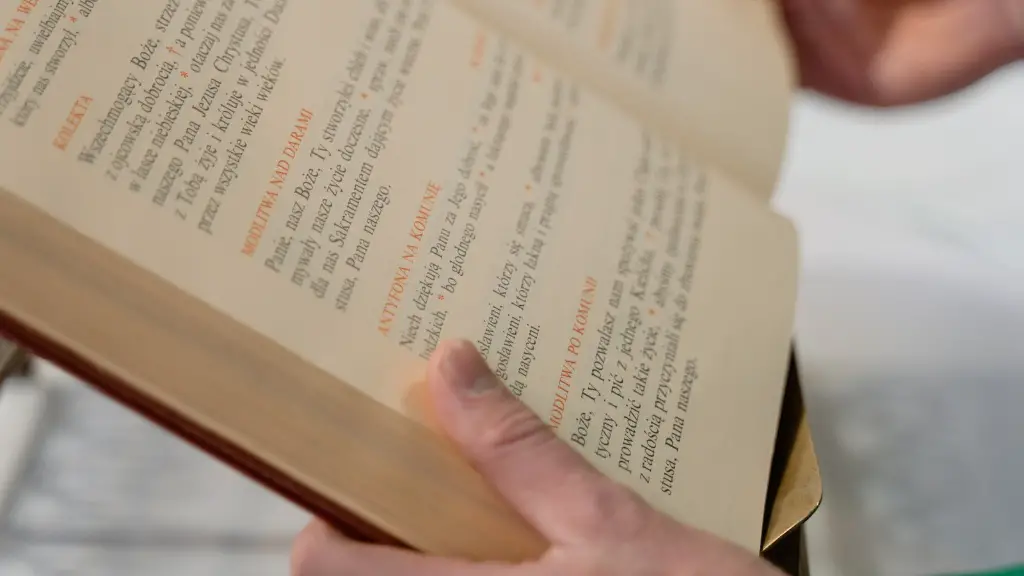Getting Started
Creating a poetry blog can be an incredibly empowering and inspiring experience. It’s a great way to share your love of poetry with the world, earn recognition for your work, and even monetize your blog if desired. So let’s take a look at how to get started.
The first step on any successful blog journey is researching your competition in the blogosphere. Have a look around for poetry blogs with similar content, topics, and styles. You want to develop a unique and distinct blogging personality, so be sure to get to know what’s out there.
The next step is to figure out how you will monetize your blog. This can be done through writing for relevant websites and magazines, through affiliate links and sponsorships, or through donations. Experiment with different strategies, and find what works best for you.
Networking and Branding
Before you start writing any blog posts, you’ll want to think about how you will network and brand your blog. Reach out to relevant networks, communities, and even other bloggers in the field. Not only will this help you expand your readership and followers, but it will also give you a great opportunity to learn and network with other creatives in the industry.
It’s also not a bad idea to start creating a portfolio and brand yourself early on. Use portfolio websites and social media to promote your blog and make sure that you create compelling, eye-catching visuals and content. You want your blog to stand out and capture attention within the first few seconds of a reader seeing your page.
Choosing a Domain Name
Now it’s time to get down to the nitty gritty. It all starts with choosing a great domain name, which should be reflective of your personal brand and easily marketable to potential readers. Come up with a shortlist of relevant domain names, and then use a domain search tool to check the availability.
You’ll also need to purchase a domain; make sure to shop around for the best deals and the most reliable and secure hosting providers. Also make sure to read the terms and conditions for each provider; there are often hidden fees, so it’s important to be aware of everything included in your purchase before you commit.
Finding a Spam-Free Blogging Host
Now that you’ve settled on a domain and hosting account, it’s time to choose a blogging platform. Again, do your research—you’ll want to be sure that you select a platform that is easy to use and secure. You’ll also want to make sure that the platform you choose has sophisticated spam filters to ensure that your blog is free from malicious comments, ads, and other unwanted content.
Setting Up Your Blog
Now you’re ready to start setting up your blog. Choose a theme that reflects your blog’s aesthetic; there are lots of free options available, but if you don’t find one you like, there are plenty of good paid options as well.
Next, take the time to set up widgets, menus, and other page options. This will help you to organize and customize your blog, ensuring that readers have an enjoyable experience. Make sure to use visuals and other content to help draw attention to your blog and give it a unique style.
Creating Compelling Poetry Content
Alright, you can now begin creating posts for your blog. As you do this, you will want to focus on creating content that is relevant to your target audience. Share your poems, engage with readers and other writers, and above all else, make sure to remain consistent with your posting schedule.
Also remember that quality is more important than quantity. You don’t need to post up a bunch of content every day in order to be successful. Instead, take the time to craft well-written pieces and create quality pieces of artwork and poetry that your readers will love.
Growing and Engaging an Audience
Part of running a successful blog is engaging in conversations with other writers and readers. Interact with people who comment on your posts, share your blog, and create conversations on social media. Encourage thoughtful discussion, and make sure to take the time to answer any comments or questions that people have.
You should also focus on expanding your readership by growing your blog’s presence on other websites, networks, and publications. You may even want to create a newsletter and send out regular updates to your readers.
Marketing and Monetizing Your Poetry Blog
You’ll also want to make sure that you’re promoting your blog and monetizing it appropriately. Develop compelling advertising campaigns and focus on getting the most out of affiliate programs and sponsorships. You can also experiment with different revenue models, and you may even want to consider creating digital products for your blog.
Optimizing for Search Engines
As your blog starts to reach more people and gain more traction, it’s important to make sure that your blog is optimized for search engines. This means researching keywords, curating content that is optimized to reach the right readers, sharing your blog on relevant websites, and making sure that your page and post titles are doing their job to attract readers.
Developing a Unique Voice
The most important part of running a successful poetry blog is to have a unique voice that resonates with readers. Spend time working on connecting with readers and developing an individual style; be sure to also keep working on growing your blog and refining your skills.
Writing a successful poetry blog requires a lot of hard work, dedication, and creativity. With a bit of practice, though, you can make your blog stand out from the crowd. All it takes is a bit of focus and commitment, and the sky is the limit.


